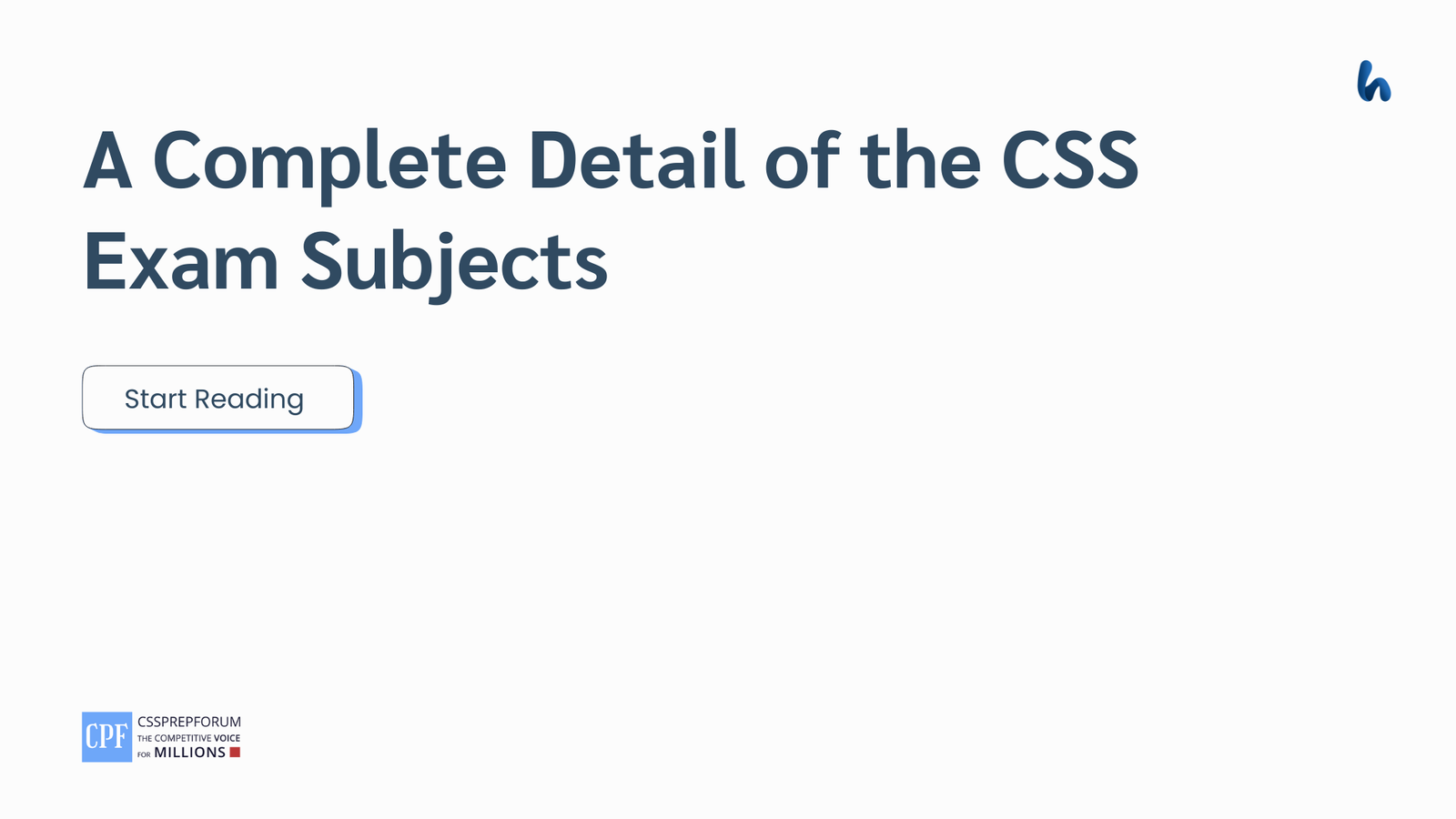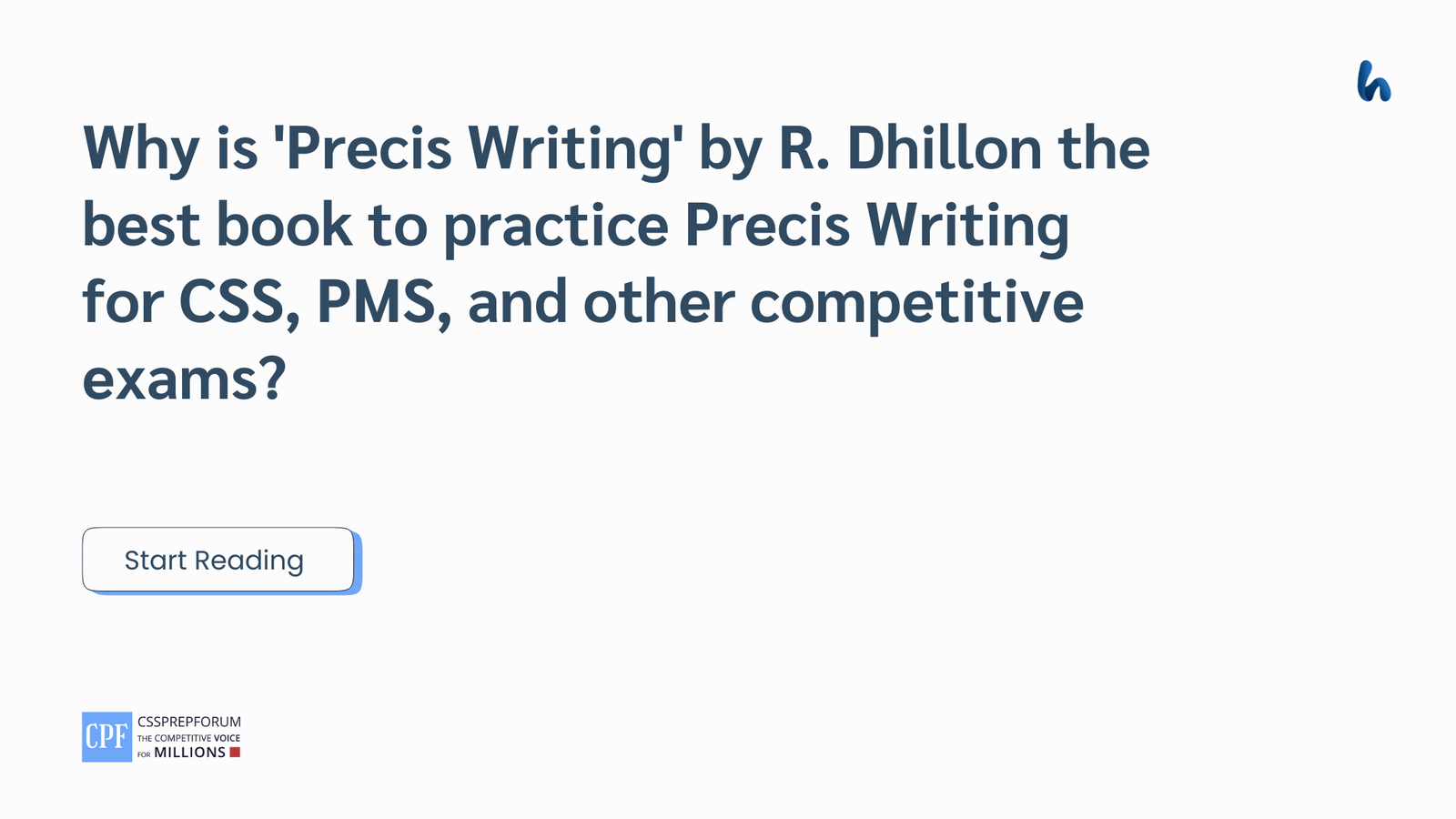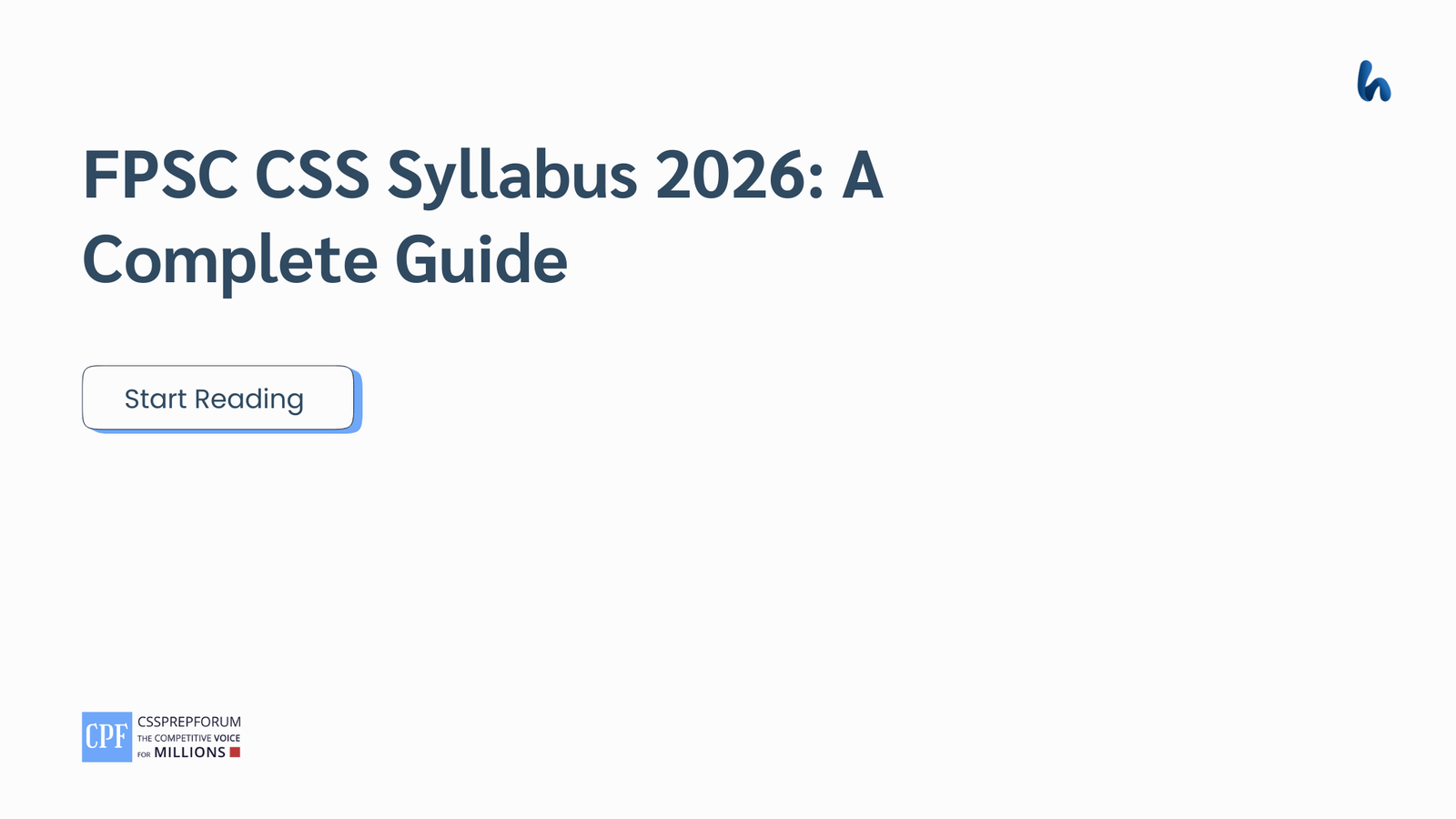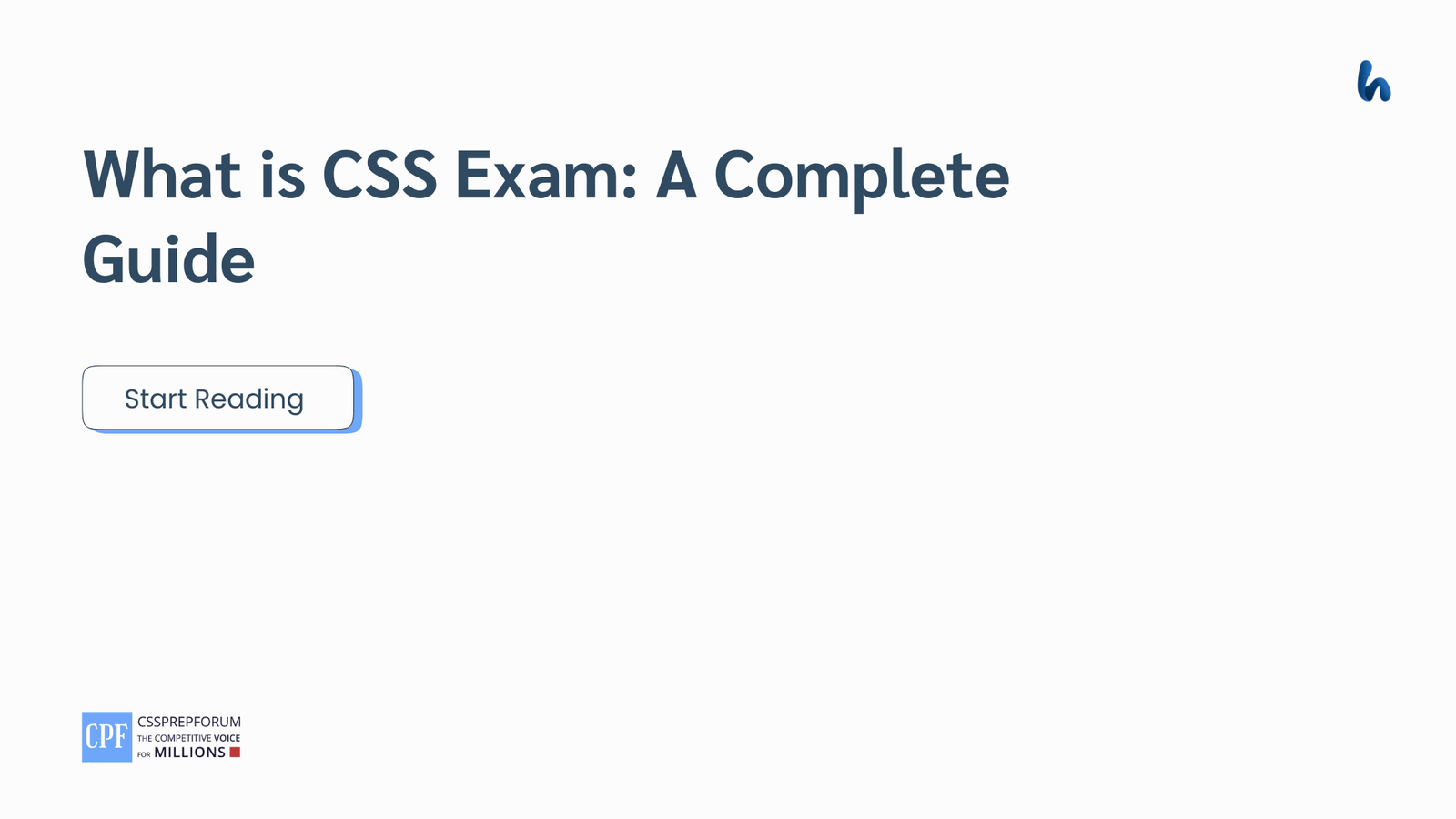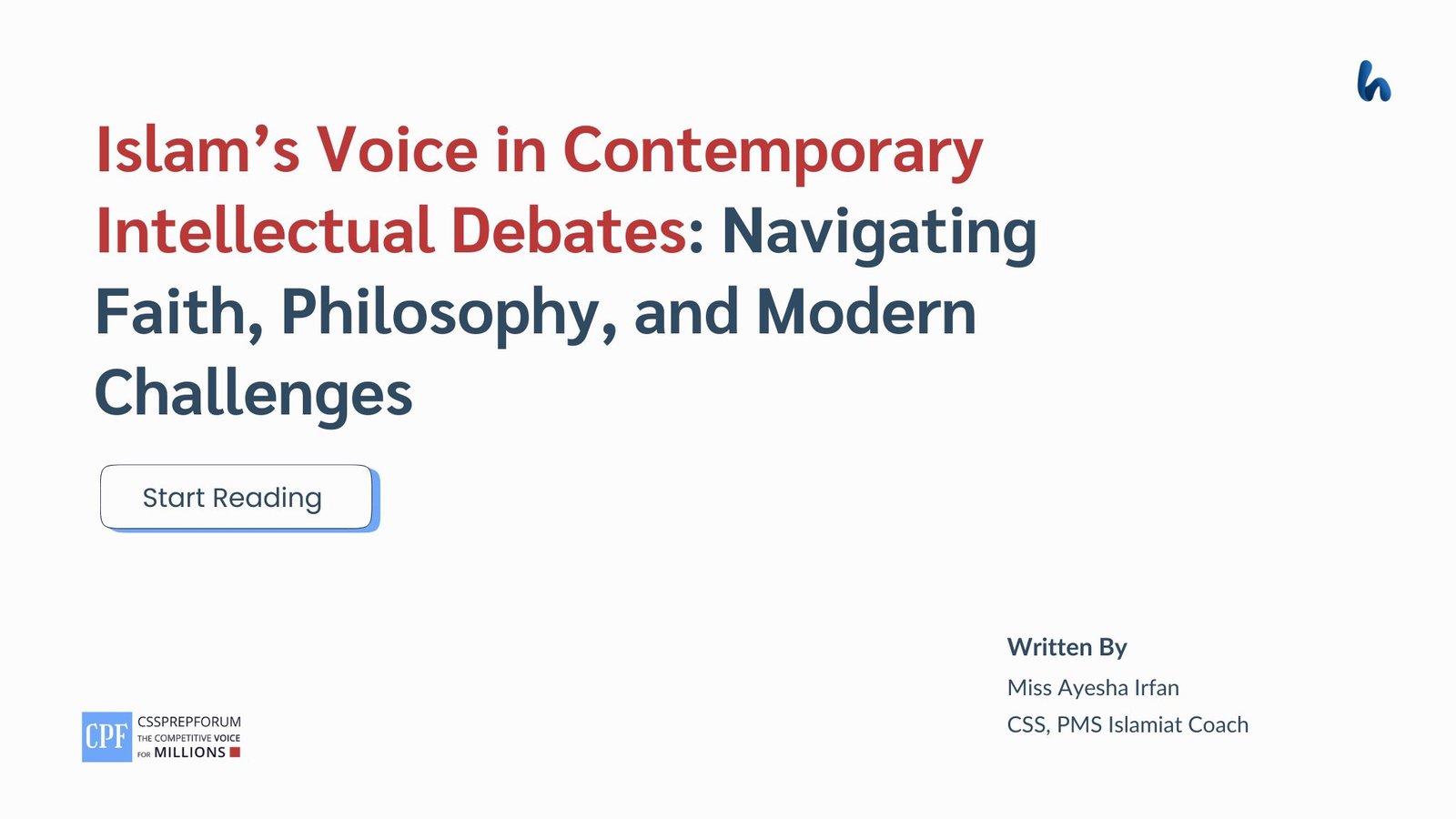CSS 2013 Solved Current Affairs Past Paper | Causes and Solutions of Extremism and Militancy in Pakistani Society
The following question of CSS Current Affairs 2013 is solved by Sir Ammar Hashmi, the best Current Affairs Coach, on the guided pattern of Sir Syed Kazim Ali, which he taught to his students, scoring the highest marks in compulsory subjects for years. This solved past paper question is uploaded to help aspirants understand how to crack a topic or question, write relevantly, what coherence is, and how to include and connect ideas, opinions, and suggestions to score the maximum.

Question breakdown
This question has two main parts: one requires identifying the causes of extremism and militancy in Pakistani society, while the other requires suggesting ways for state organs to overcome these problems.
Outline
1-Introduction
2-Overview of extremism and militancy in Pakistan
3-Causes of Extremism and Militancy in Pakistan
- Misinterpretation of Islamic teachings and Jihad
- Hate-filled and flawed educational content
- Online radicalization and unregulated digital platforms
- Inconsistent state policy and appeasement of militants
- Socioeconomic deprivation and youth frustration
4-Solutions and Role of State Organs to Overcome Extremism and Militancy
- Curriculum reforms and removal of hate literature
- Promotion of moderate religious discourse through religious institutions
- Implementation of the NCVE policy and better provincial coordination
- Youth engagement through education, jobs, and civic programs
- Enhanced regional cooperation and counter-terror finance mechanisms
5-Critical Analysis
6-Conclusion

Answer to the Question
Introduction
Over the past few decades, Pakistan has witnessed a steady rise in extremism and militancy, threatening its internal stability and damaging its international reputation. These challenges stem from ideological, socio-economic, and political factors. Among the most critical causes are the misuse of Islamic concepts like “Jihad,” which gained prominence during the Afghan War era and were later institutionalized through foreign-funded madrassas and biased curricula. For example, a report by the International Crisis Group highlights how madrassas in the 1980s and 1990s became breeding grounds for militancy under the guise of religious education. Other key contributors include the lack of a clear youth policy, the spread of hate literature, and the failure of the state to regulate extremist groups strictly. To counter this, the government must prioritize curriculum reforms that promote tolerance and critical thinking, and empower religious scholars to lead balanced, authentic interpretations of Islamic teachings. Only through such multifaceted reforms can Pakistan hope to dismantle the roots of extremism and ensure long-term peace and security.
Overview of extremism and militancy in Pakistan
Extremism and militancy in Pakistan have surged due to a combination of ideological distortions, flawed education, and socio-political factors. The misinterpretation of Islamic teachings, especially Jihad, which was politicized during the Afghan War and reinforced by foreign-funded madrassas, remains a primary driver. For example, 74 percent of madrassa students in conflict zones view Jihad as armed struggle, reflecting extremist indoctrination. Educational curricula often contain hate-filled content promoting sectarianism, with audits revealing biased language in Punjab and Khyber Pakhtunkhwa textbooks. Online platforms further accelerate radicalization, influencing 41 percent of radicalized youth. State policies have been inconsistent, sometimes appeasing militants, which emboldened groups like the TTP, causing a 51 percent rise in attacks after failed peace talks. Socioeconomic deprivation and youth unemployment, reaching over 10 percent nationally, provide fertile ground for militant recruitment. Addressing these issues requires urgent curriculum reforms, the promotion of moderate religious discourse, the full implementation of the National Counter Violent Extremism Policy, youth engagement through education and job opportunities, and enhanced regional cooperation to disrupt terror financing. Without these comprehensive measures, Pakistan’s security and social fabric remain at serious risk.
Causes of Extremism and Militancy in Pakistan
There are various causes of extremism and militancy in Pakistan, but the following are some of the most significant ones.
- Misinterpretation of Islamic teachings and Jihad
First, ideological confusion and misinterpretation of Jihad have played a critical role in fueling extremism. The concept of Jihad, in Islamic teachings, represents a moral and spiritual struggle. However, militant groups have distorted it to justify violence against civilians and state institutions. This misinterpretation gained momentum during and after the Afghan War in the 1980s, when Jihad was politically used to mobilize fighters with support from global powers. According to a 2022 report by the Islamabad Policy Research Institute (IPRI), 74 percent of madrassa students interviewed in conflict zones believed that Jihad involved taking up arms, a view shaped by extremist narratives.
- Hate-filled and flawed educational content
Second, flawed curricula and the presence of hate literature in educational institutions have promoted intolerance and narrow-mindedness. In many government textbooks, non-Muslims are portrayed as enemies, and martyrdom is often glorified without context. A 2021 content audit by the Sustainable Development Policy Institute (SDPI) found that textbooks in Punjab and Khyber Pakhtunkhwa contained language promoting sectarian superiority and hostility toward other religions. This biased education system creates fertile ground for extremist indoctrination from a young age.
- Online radicalization and unregulated digital platforms
Third, the rise of social media has led to unchecked digital radicalization, especially among youth. Extremist content circulates freely online through videos, hashtags, and anonymous accounts, making recruitment easier and faster. A study by the Digital Rights Foundation in 2023 revealed that 41 percent of radicalized youth admitted to being influenced by online videos or forums promoting extremist ideologies. Despite existing cyber laws, enforcement against hate speech and violent propaganda on platforms like YouTube and Facebook remains minimal.
- Inconsistent state policy and appeasement of militants
Fourth, appeasement policies and inconsistent stances by the state have allowed extremist elements to grow unchecked. Historically, the state has differentiated between “good” and “bad” militants, a policy that has backfired. The TTP, for instance, was once seen as a manageable actor. Still, their resurgence after failed peace talks in 2022 led to a 51 percent increase in attacks, as the Pakistan Institute for Conflict and Security Studies (PICSS) reported. This inconsistency undermines state authority and emboldens extremist groups.
- Socioeconomic deprivation and youth frustration
Fifth, socioeconomic deprivation and the state’s failure to engage the youth meaningfully have also contributed to the rise of militancy. With nearly 63 percent of Pakistan’s population under the age of 30, a lack of access to jobs, education, and identity-building platforms leaves many vulnerable to radical recruitment. The Pakistan Bureau of Statistics reported in 2023 that youth unemployment stands at over 10 percent nationally; in some tribal districts, it exceeds 18 percent. Militants exploit this despair by offering a sense of income, purpose, and belonging.
Solutions and the role of state organs to overcome extremism and militancy
The following are some of the most significant solutions that the state organs can undertake to overcome extremism and militancy in Pakistan.
- Curriculum reforms and removal of hate literature
First, the state must urgently reform school curricula and eliminate hate literature. Educational reforms should promote tolerance, critical thinking, and the study of peace. The National Curriculum Council must monitor textbooks for discriminatory content. 2021 the Single National Curriculum was introduced, but analysts like Dr. A.H. Nayyar argue that its implementation has been inconsistent and uneven across provinces. A dedicated review board involving academics, psychologists, and interfaith scholars should be formed to oversee content revisions.
- Promotion of moderate religious discourse through religious institutions
Second, religious institutions should be empowered to clarify the true meaning of Islamic teachings. The Council of Islamic Ideology and prominent ulema must actively denounce extremist interpretations and promote a moderate religious discourse. For instance, after the tragic lynching in Sialkot in 2021, mainstream scholars issued a fatwa declaring such actions un-Islamic. These efforts must be scaled up with the help of media channels, Friday sermons, and inter-sect dialogue forums.
- Implementation of the NCVE policy and better provincial coordination
Third, all provinces must fully implement the National Counter Violent Extremism Policy (NCVE) 2021. This includes setting up deradicalization centers, launching civic education campaigns, and closely monitoring religious gatherings. According to NACTA’s 2023 report, only four provinces have operationalized some components of the NCVE, highlighting a lack of federal-provincial coordination. A federal oversight committee should be formed to track provincial progress and ensure uniform implementation.
- Youth engagement through education, jobs, and civic programs
Fourth, a national youth engagement policy should be introduced to provide opportunities for education, employment, and civic participation. Skills development programs, sports leagues, startup incubators, and digital literacy workshops should be funded at the district level. The Kamyab Jawan Program made a promising start, but as of early 2024, delays in disbursements and poor outreach have limited its impact. Strengthening such initiatives can give young people a stake in the country’s future.
- Enhanced regional cooperation and counter-terror finance mechanisms
Fifth, regional and international cooperation must be expanded to combat cross-border terrorism and funding networks. Pakistan must improve intelligence-sharing mechanisms with neighboring states and uphold its commitments to bodies like the Financial Action Task Force (FATF). For instance, cooperation with Iran helped dismantle multiple terror cells in Balochistan in 2023. Sustained diplomatic and security collaboration can contain the external dimensions of militancy.
Critical Analysis
Critically, Pakistan’s battle with extremism is not just a security issue; it reflects the state’s failure to create an inclusive national identity, educate its population responsibly, and consistently enforce the rule of law. Efforts such as the National Action Plan and NCVE policy hold promise, but without robust institutional backing and political will, these documents risk becoming mere formalities. Moreover, the absence of a strong counter-narrative at both educational and religious levels has allowed militants to define the discourse. If left unchecked, the normalization of hate and militancy could permanently damage the social fabric of the country.
Conclusion
In conclusion, the causes of extremism and militancy in Pakistan are complex and interlinked, ranging from ideological distortion to governance gaps. The solution lies in a multifaceted strategy that involves educational reform, religious moderation, youth empowerment, and international cooperation. State organs must move beyond reactive counterterrorism and invest in a long-term preventive strategy. Only then can Pakistan hope to defeat this internal enemy and build a peaceful, progressive society.

CSS Solved Past Papers’ Essays
Looking for the last ten years of CSS and PMS Solved Essays and want to know how Sir Kazim’s students write and score the highest marks in the essays’ papers? Then, click on the CSS Solved Essays to start reading them.
CSS Solved Essays
CSS Solved Current Affairs Past Papers
Looking for the last fifteen years of CSS Solved Current Affairs to learn how to attempt them and to score high? Let’s click on the link below to read them all freely. All past papers have been solved by Pakistan’s top CSS Current Affairs coach having the highest score of their students.
CSS Solved Current Affairs
CSS Solved General Science & Ability Past Papers
Want to read the last ten years’ General Science & Ability Solved Past Papers to learn how to attempt them and to score high? Let’s click on the link below to read them all freely. All past papers have been solved by Pakistan’s top CSS GSA coach having the highest score of their students.
General Science & Ability Solved Past Papers


